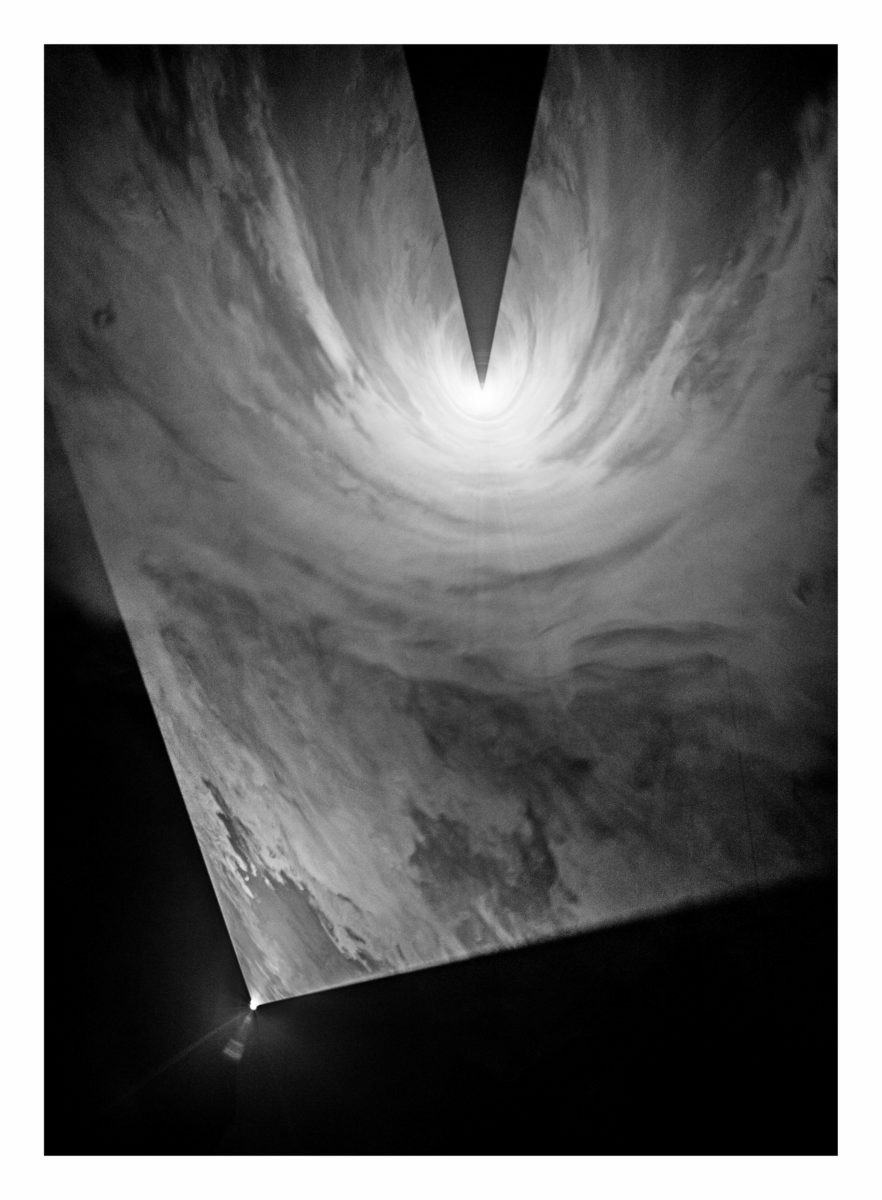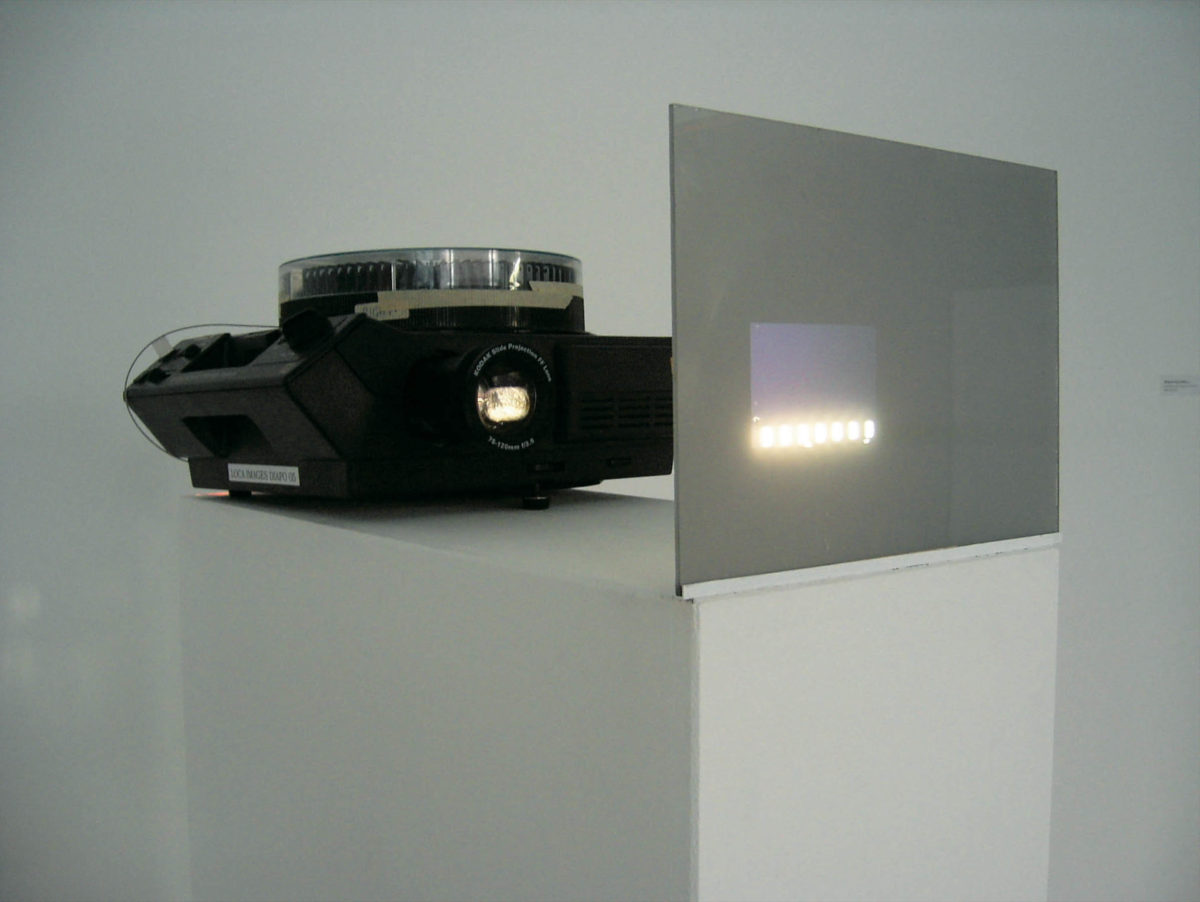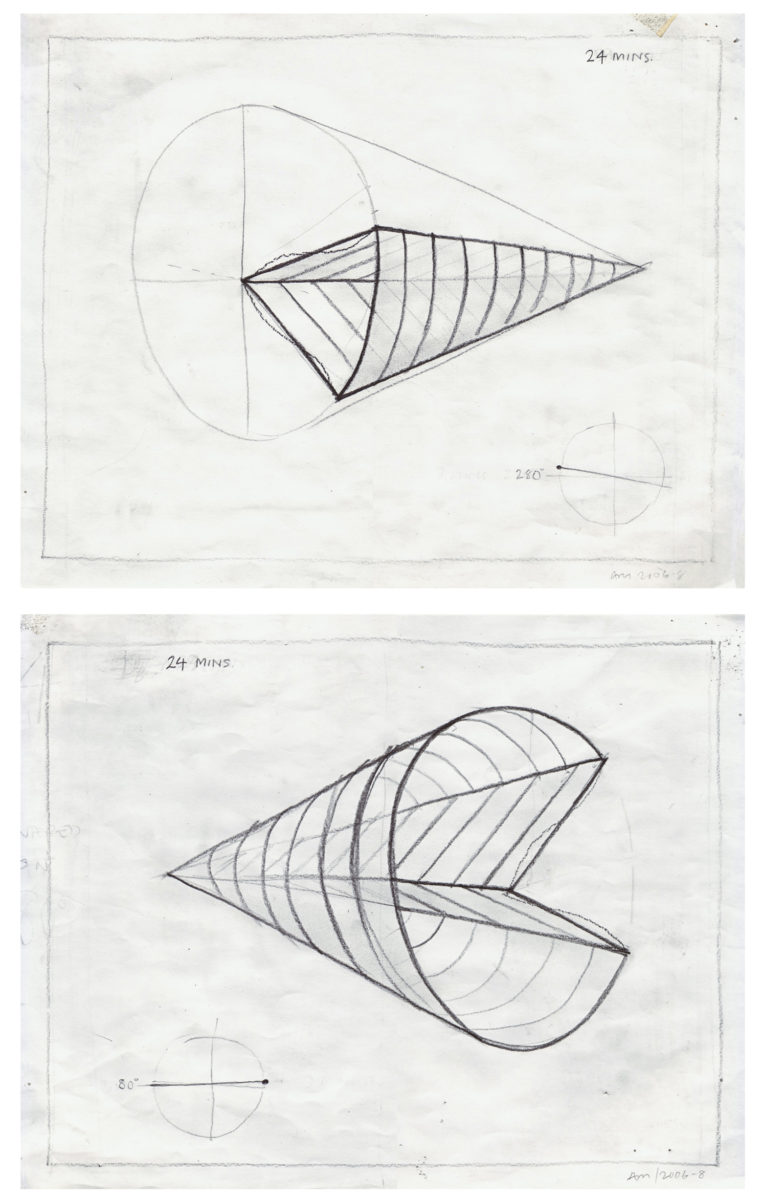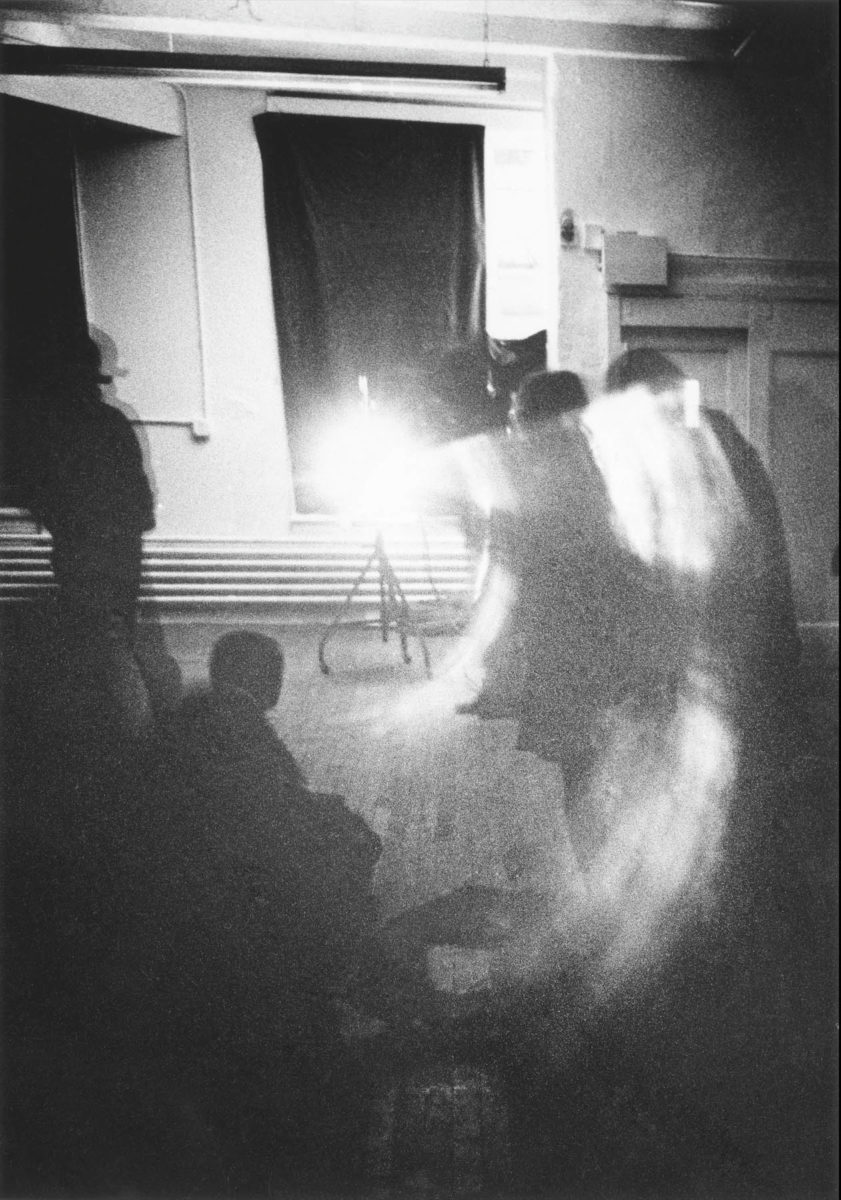Interview: Anthony McCall On ‘Solid Light Works’ At The Hepworth Wakefield
By Something CuratedSolid Light Works, running at The Hepworth Wakefield from 16 February to 3 June 2018, will be the first major UK exhibition of artist Anthony McCall in over a decade. Exploring all facets of his practice, the show includes the UK premiere of three “solid light” pieces. Known for his large-scale, immersive sculptural light installations that incorporate the visitor and invite them to become active participants in the work, McCall describes his practice as existing in the space where cinema, sculpture and drawing overlap. Something Curated spoke with the artist in the run-up to The Hepworth show to learn more.

Something Curated: Could you talk us through your upcoming exhibition at The Hepworth Wakefield?
Anthony McCall: The exhibition is organised around three Solid Light installations, none of which have been seen in the UK before. Those are Doubling Back, made in 2003, Leaving (With Two-Minute Silence), made in 2009, and Face to Face, made in 2013. These three works occupy two of the four galleries. Then we set out to do two things: to provide a glimpse of the history of the Solid Light works since the beginning; and to try to give some insight into my working process, which involves a relay of different kinds of drawing.
SC: How did you go about selecting the works to include and was this a challenging process?
AM: We wanted to show installations that had not been seen in the UK before and also to show works which were a little spaced out in time. And that pretty much made the choice: there were only so many works that satisfied both criteria. So, Doubling Back was the earliest work since I began again in the early 2000s; the most recent was Face to Face, made ten years later.
SC: What has it been like working with Andrew Bonacina?
AM: Andrew approached the curating of the show with great clarity. He had very good ideas and he was also receptive to mine. It was a real collaboration and we had a lot of fun developing the structure for the show.

SC: Your works from the 1970s were noted for exploring the particular qualities of film itself, such as light, time, surface and projection – when did you start to think about film in this way?
AM: Quite early on actually. The precursor for the Solid Light Works was, I suppose, Miniature in Black and White, which was made in 1972 for a Kodak carousel projector – a slide work. It’s in the show; it was a slide installation, 81 slides changing continuously at a high speed, back-projected onto a small translucent screen. The spectator faced the screen, and the projector was just behind it. So you receive the light directly through these tiny images and this really had all the elements of a Solid Light Work, without quite being one. The questions that led to Line Describing a Cone (1973) really had to do with whether it was possible to make a film that existed only at the moment of projection and so shared a common present tense with the audience. There was also the idea of the projection occupying the same physical space as the audience.
Line Describing a Cone emerged out of this train of thought, It was a cinematic problem that I was puzzling over. But having made it, it threw off a few surprises. One of those was the sculptural quality of the projection, and I began to investigate the different ways one might think about that. This led to three short “cone” films. One played with expanding and contracting the conical volume of the form while it simply hung in space; another, Partial Cone, made a series of scale-like sequences out of the way in which the light could be modulated to create different qualities of surface.
SC: Could you tell us about your involvement with the London Filmmakers’ Cooperative?
AM: The London Filmmakers’ Cooperative has had many lives and I was associated with them when they were in their structural film and expanded cinema period, we’re talking about the very early seventies. One of the good things about the Co-op, was that it had a printer and other simple production facilities on-site, it showed the films being made there, it theorised what was going on, and it distributed the works, so it had these closely related faces. This made it a tremendously important institution at that time… well, “institution” may be the wrong word, it was really quite rough-and-ready.

I was already in New York and I didn’t actually make my films there but the work I was making was very much in tune with the kind of work they were making and I did a number of exhibitions with them. In about 1975, Carolee Schneemann and myself did a double show. She showed Up to and Including Her Limits, which was a two-projector work with live performance and I showed the four “cone” films I’d made. It was a long programme and it was kind-of great. A year or two later, the Filmmakers Co-op showed my Long Film for Four Projectors. With a five-and-a-half hour duration it was a difficult film to put on, but they had the projectors, and every filmmaker there knew how to project, so we had the projectionists too.
SC: Your work is described as sitting where cinema, sculpture and drawing overlap – what excites you about this intersection?
AM: I think I stumbled backwards into all these things, as one does sometimes when you get lucky, when you make something that produces the unexpected. Line Describing a Cone was more physical than I had ever imagined it would be, especially the way the growing form incorporated the spectator. It was necessary to keep shifting your viewpoint to grasp what sort of form you were looking at – that is a sculptural perspective. But the work also unfolds over time – that is a property of cinema.
Then we come to drawing. Drawing appears in my work in the very earliest moments of an idea, until after the completion of it and after its realisation as an installation. In between there are sometimes several steps including the working out of the spatial configurations, various kinds of working drawings, storyboard sequences showing how the footprints change over time, or instruction drawings for the animation programmer. Then, after any of these works have been installed, there, right at the centre of the installation is a projected, animated line drawing. Drawing is always present and always close.

SC: A key part of the show is intended to highlight how drawing has been an enduring and essential component of your practice – is there a direct link between your works on paper and the presented installations?
AM: Andrew and I have tried to make sure the stages of making a solid light work are legible. For instance, if we take Doubling Back, which is the earliest installation in the show, we have a set of six pencil drawings that detail the progression of the volumetric shapes in relation to the adjacent wall and floor. We have an example of one of my “Instruction Drawings”; these are the diagrams I make to describe the composition to my programmer: these are detailed, visual notes, with sketches, measurements, notes about direction, time, masking, things like that. Then, also on the wall, are a vertically displayed set of footprint drawings. Those are screenshots, essentially, showing the drawing within the final version of the film at three-minute intervals, so you can graphically track the changing structure of the piece. These different kinds of drawings surround the installation and we’ve done something very similar with the other two as well.
SC: Over the decades, do you recognise any shifts or seminal moments that highlight the evolution of your practice?
AM: I suppose the biggest shift was a negative one really, which was the 20 or 25 years where I had actually withdrawn from making art. One of the problems I was dealing with that led to this hiatus was that the work had just begun to be shown in museums, kunsthalls and biennials, where the conditions were very different from the ones that I made the works under. Originally, I made these works in lofts and I showed them in lofts – and as befits an ex-warehouse, they were full of dust. Also back then, many more people smoked than do now. In museum spaces, by contrast the air was very clean, there was no dust in the air, and certainly no cigarette smoking, and I suddenly had a visibility crisis. It wasn’t until the mid-nineties that the haze machine was invented, which decisively solved the visibility issue.

Over the last fifteen years, I suppose the key thing for me would have been the discovery of verticality. I had actually imagined a vertical piece in one of my 1970s notebooks, but I was unable to make one until 2003. Of course, that was only possible because of the shift that had occurred in the 1980s and 1990s when analogue gave way to the digital. A 16mm film projector is gravity-bound. If you were to turn it through 90 degrees, in order to have it point from ceiling to floor, the reels would probably fall off; certainly it wouldn’t work. A digital projector is just a grey box and you can turn it to face any direction.
SC: How important is audience participation in your work?
AM: This is the hardest thing to articulate, since participation is important for all works of art. But perhaps there is a unique kind of engagement between a solid light work and the spectator. Part of it has to do with the fact that it isn’t really there in any normal sense, yet, standing or moving in the dark, the mind insists that the translucent membranes are walls and that the walls create spaces that the fully-conscious spectator can explore and occupy, and that despite the fact that the “solid light” forms seem sculptural, they are also slowly shifting in shape. The motion, slow as it is, I suspect is one of the keys to the pleasure that visitors articulate. It may also be connected to the contradiction between the impossible illusion of space on the one hand and the rational structure on the other.

SC: Some of the titles of your work, such as Face to Face II (2013), imply bodies meeting. Are they named to anticipate how you would like the visitor to behave in the space?
AM: My titles in the last 10 years or so have always referred to the corporeal, so you have Meeting You Halfway, Face to Face, Between You And I, Coupling, and so on. They are, on the one hand referring to what I like to think the works are exploring: the idea of the reciprocity that takes place between people, in our relationships with one another. My form of composition, based on a cinematic device called the wipe, in which one form gradually obscures another, is ideal for this purpose. At the same time, the titles also refer to the relationships between a visitor and the object. Either way, the titles are merely formal descriptions of what I think is going on, and they have nothing to say about how to behave when looking at them.
SC: You originally worked with 16mm film, and recently have used digital animation. Has this shift in medium changed your approach conceptually?
AM: There’s a clear through-line from the seventies to the present. I’m still projecting line drawings which produce sculptural objects made of light. However, digital animation has altered the work process. I now have far greater control than I used to have with film, and it enables me to make changes and alter things right until the last minute.
SC: What are you currently reading?
AM: I’m currently reading the new translation of The Odyssey by Emily Wilson.
Anthony McCall: Solid Light Works at The Hepworth Wakefield from 16 Feb – 3 Jun 2018
Feature image: Anthony McCall. “Face to Face (II)” (2013). Installation view, Eye Film Museum, Amsterdam, 2014. Photo by Hans Wilschut.
Interview by Keshav Anand | Images courtesy of the artist & The Hepworth Wakefield